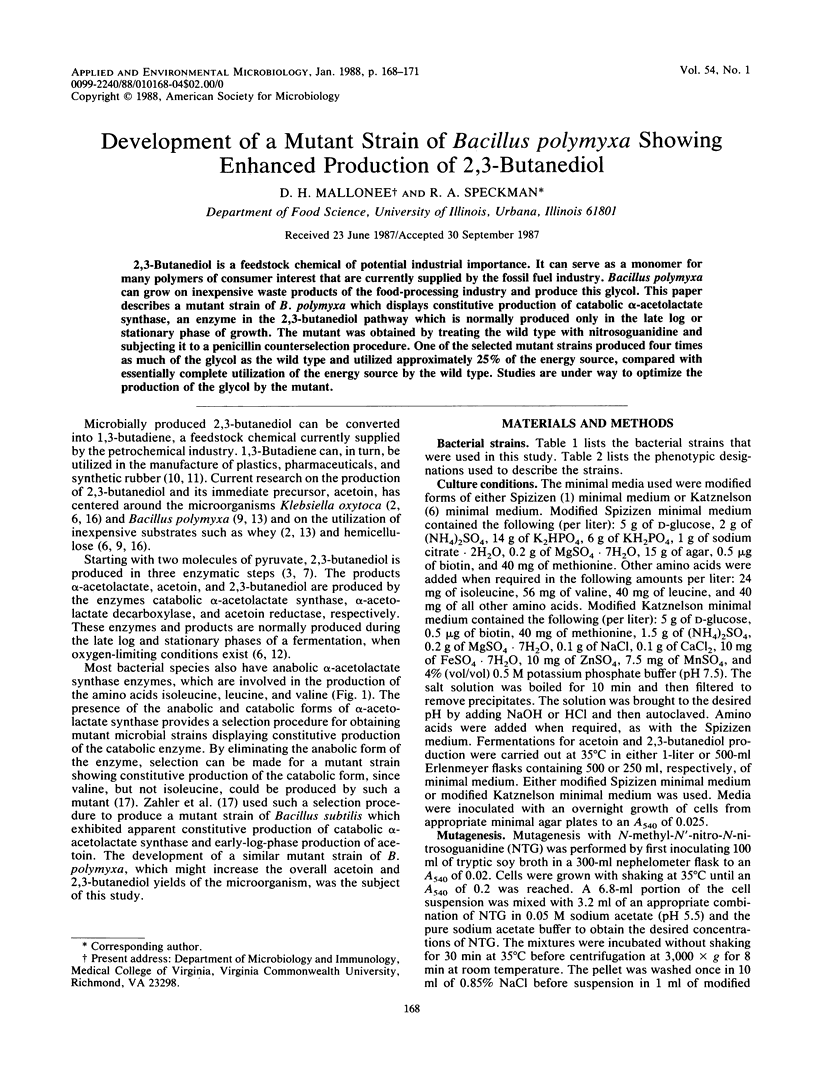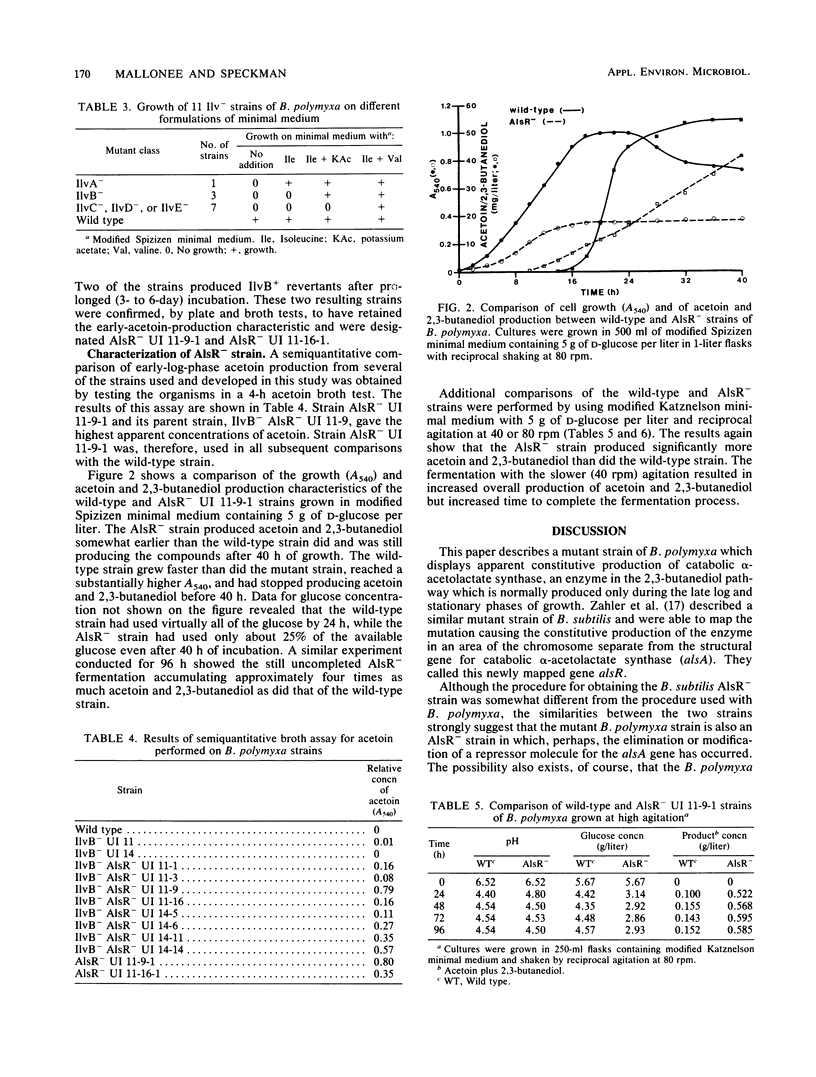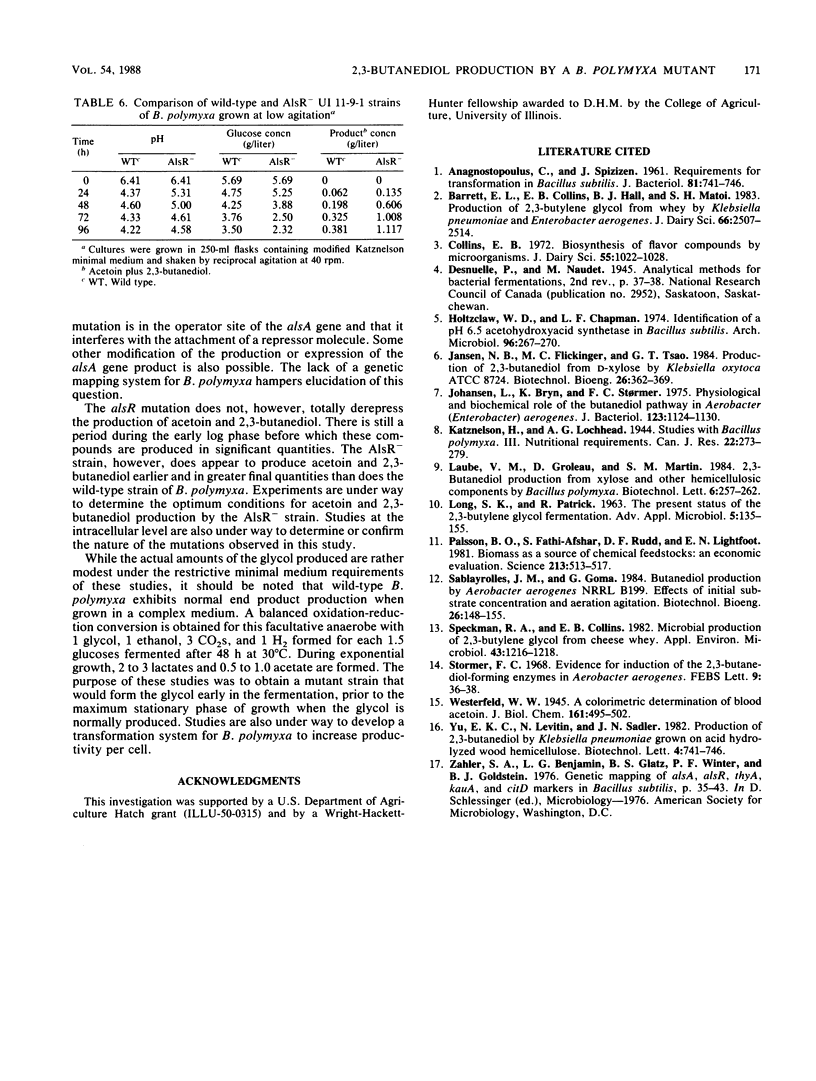Abstract
2,3-Butanediol is a feedstock chemical of potential industrial importance. It can serve as a monomer for many polymers of consumer interest that are currently supplied by the fossil fuel industry. Bacillus polymyxa can grow on inexpensive waste products of the food-processing industry and produce this glycol. This paper describes a mutant strain of B. polymyxa which displays constitutive production of catabolic α-acetolactate synthase, an enzyme in the 2,3-butanediol pathway which is normally produced only in the late log or stationary phase of growth. The mutant was obtained by treating the wild type with nitrosoguanidine and subjecting it to a penicillin counterselection procedure. One of the selected mutant strains produced four times as much of the glycol as the wild type and utilized approximately 25% of the energy source, compared with essentially complete utilization of the energy source by the wild type. Studies are under way to optimize the production of the glycol by the mutant.
Full text
PDF



Selected References
These references are in PubMed. This may not be the complete list of references from this article.
- Anagnostopoulos C., Spizizen J. REQUIREMENTS FOR TRANSFORMATION IN BACILLUS SUBTILIS. J Bacteriol. 1961 May;81(5):741–746. doi: 10.1128/jb.81.5.741-746.1961. [DOI] [PMC free article] [PubMed] [Google Scholar]
- Barrett E. L., Collins E. B., Hall B. J., Matoi S. H. Production of 2,3-butylene glycol from whey by Klebsiella pneumoniae and Enterobacter aerogenes. J Dairy Sci. 1983 Dec;66(12):2507–2514. doi: 10.3168/jds.S0022-0302(83)82119-5. [DOI] [PubMed] [Google Scholar]
- Holtzclaw W. D., Chapman L. F. Indentification of a pH 6.5 acetohydroxyacid synthetase in Bacillus subtilis. Arch Microbiol. 1974 Mar 7;96(3):267–270. doi: 10.1007/BF00590182. [DOI] [PubMed] [Google Scholar]
- Johansen L., Bryn K., Stormer F. C. Physiological and biochemical role of the butanediol pathway in Aerobacter (Enterobacter) aerogenes. J Bacteriol. 1975 Sep;123(3):1124–1130. doi: 10.1128/jb.123.3.1124-1130.1975. [DOI] [PMC free article] [PubMed] [Google Scholar]
- LONG S. K., PATRICK R. THE PRESENT STATUS OF THE 2,3-BUTYLENE GLYCOL FERMENTATION. Adv Appl Microbiol. 1963;5:135–155. doi: 10.1016/s0065-2164(08)70009-1. [DOI] [PubMed] [Google Scholar]
- Palsson B. O., Fathi-Afshar S., Rudd D. F., Lightfoot E. N. Biomass as a source of chemical feedstocks: an economic evaluation. Science. 1981 Jul 31;213(4507):513–517. doi: 10.1126/science.213.4507.513. [DOI] [PubMed] [Google Scholar]
- Speckman R. A., Collins E. B. Microbial production of 2,3-butylene glycol from cheese whey. Appl Environ Microbiol. 1982 May;43(5):1216–1218. doi: 10.1128/aem.43.5.1216-1218.1982. [DOI] [PMC free article] [PubMed] [Google Scholar]
- Stormer F. C. Evidence for induction of the 2,3-butanediol-forming enzymes in Aerobacter aerogenes. FEBS Lett. 1968 Nov;2(1):36–38. doi: 10.1016/0014-5793(68)80094-8. [DOI] [PubMed] [Google Scholar]


